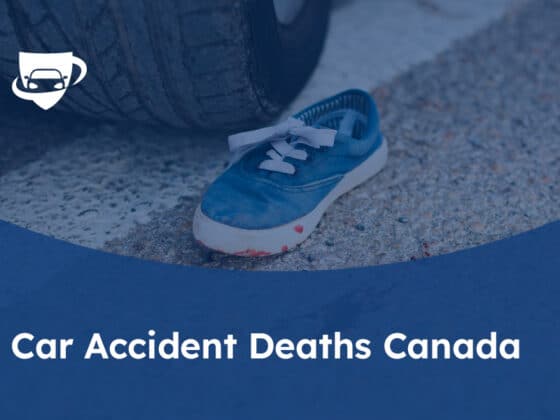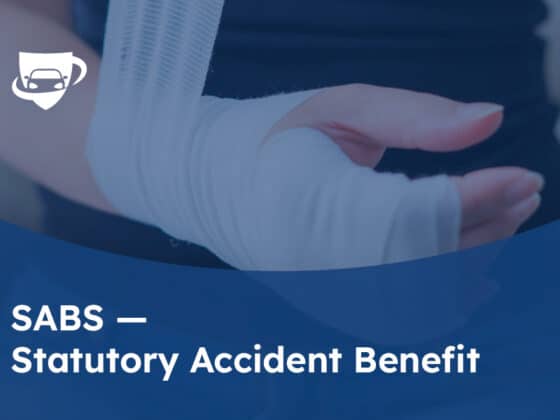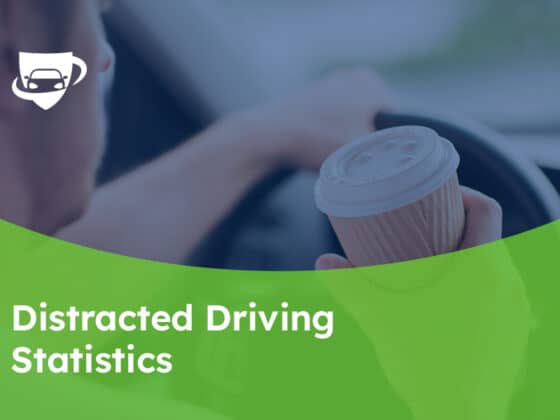When it comes to road safety Canada has huge concerns. Every year, there are thousands of accidents on Canadian roads. While it’s difficult to pinpoint a single reason for this number, one factor could be that drivers aren’t taking safety seriously enough.
On the bright side, many of these accidents could be prevented by following some simple safety tips.
If you’re looking to stay safe on the roads this summer, check out our article. With a bit of caution and preparation, you can help keep yourself and your loved ones safe on our nation’s roads. Keep reading to learn more.
Factors Interfering With Safety on the Road in Canada
A number of factors can interfere with safety on the Canada roads. One of the most common is the weather.
However, there are human factors such as distracted or impaired driving and speeding.
Winter Driving
Canada is a big country, and winter weather can be extreme from coast to coast. This means that when winter driving becomes an issue, it affects a lot of people.
Winter driving can be dangerous for several reasons. For one thing, the roads are often covered in snow and ice, making it easy to lose control of your vehicle. Snow and ice can make roads slippery and difficult to navigate, and low visibility can make it hard to see potential hazards.
So, driving safety may be endangered. In addition, cold temperatures can cause car batteries to lose power and tires to lose traction.
Also, with days getting shorter, there’s less time to get where you’re going before the sun goes down. That means you’re more likely to be driving in the dark, which can make it harder to see potential hazards.
Finally, winter weather can be unpredictable, so you may find yourself caught in a sudden blizzard or icy conditions that you weren’t prepared for. Despite all these challenges, winter driving is a necessary part of life in Canada.
By taking some simple precautions, you can help with the road safety Canada wants to ensure in winter.
If you want to know about winter driving in the US, we have a separate article on that.
Speeding
Speeding is a huge problem on Canadian roads. For instance, speed was a factor in 23% of all car accident deaths in Canada in 2019. That’s almost one in four fatalities.
There are a few reasons speeding interferes with traffic safety:
- increases the risk of crashing
- decreases the time drivers have to react to hazards
- increases the severity of injuries
All these factors combine to make speeding a major safety concern on Canadian roads. So, why do people do it?
Unfortunately, many drivers see speeding as a way to save time. But the truth is, the time you save by speeding is usually not worth the risk. Therefore, next time you’re tempted to step on the gas, remember—safety comes first.
Distracted Driving in Canada
Distracted driving is one of the leading causes of car accidents on Canadian roads, and it’s only getting worse as our dependence on technology grows.
Nearly three-quarters of Canadians admit to engaging in distracted driving behaviours like talking on the phone or sending text messages, even though it’s illegal.
Distracted driving is dangerous because it increases your chances of having an accident. When you’re not paying attention to the road, you’re more likely to miss something important for road safety, like stop signs or pedestrians.
Even when we’re not using our phones, other distractions like eating, drinking, or even just talking to passengers can take our attention away from the road. Basically, if you’re not focused on the road, you’re distracted. And that’s a recipe for disaster.
The consequences of distracted driving can be serious or even fatal. It’s important to remember that safety should be your number one priority when you’re behind the wheel. Put down your phone, and focus on the road. Your life could depend on it.
Car Accident Deaths in Canada Due to Impaired Driving
It’s no secret that impaired driving is a severe problem on Canadian roads. According to a recent survey, one in four Canadian cannabis users admits to driving while under the influence of the drug.
Then again, it’s not just cannabis. Alcohol, prescription drugs, and even over-the-counter medications can impair your driving ability and even lead to a fatal car crash. For example, impaired driving accounted for 17.6% of car accident fatalities in Canada in 2020.
The bottom line is that if you’re not feeling well, you shouldn’t get behind the wheel. Driving is a complex task that requires your full attention and focus.
Even the safest cars in Canada wouldn’t help, as your judgment, reaction time, and coordination are all affected when you’re impaired.
You’re more likely to make mistakes and take risks you wouldn’t usually take. Those mistakes can have serious consequences, like death.
If you’re planning on consuming any substance that could impair your driving, make sure you have a designated driver. It’s not worth risking your life or the lives of others on the road.
Canada’s Road Safety Strategies
From enforcing strict laws to conducting public awareness campaigns, Canadians look for ways to keep their roads safe.
Driver Education
To get a license in Canada, drivers must complete a written exam and a practical driving test. By ensuring that all drivers have a good understanding of the basics, Canadians can reduce the number of accidents on the roads.
If you want to know how many people die in car accidents in Canada, that number will reach 1,745 in 2020.
Strict Penalties
An important strategy is the enforcement of strict penalties for dangerous driving behaviours. For example, speeding, drunk driving, and texting while driving are all serious offences that can result in hefty fines and even jail time in Canada.
These behaviours will not be tolerated, as we can see from the Canadian traffic laws, so Canadians can be discouraged from engaging in them in the first place.
Road Safety Strategy 2025
This is an ambitious plan to keep Canadian roads safe. The strategy has many vital principles aligned with international best practices, including:
- the adoption of the Safe System Approach
- the provision of an inventory of proven and promising best practices to address key risk groups and contributing factors
- a 10-year timeline
Vehicle Safety Ratings in Canada
They provide drivers with important information when choosing a vehicle, indicating how safe a particular car is in the event of a collision or how effective it is at avoiding one.
In Canada, three main entities establish car safety ratings, each using a different rating system:
- the National Highway Traffic Safety Administration (NHTSA) Safety Ratings
- the National Safety Mark
- the Insurance Institute for Highway Safety (IIHS) Safety Ratings
Road Safety for Kids in Canada
School buses help with safety on the roads. In fact, they are the safest form of transportation in Canada.
A lot of kids are safely transported thanks to the hard work of federal, provincial and territorial governments, school boards and operators. Each group has a role in maintaining high safety standards for school buses in Canada.
Also, every parent should teach their kid about road safety rules and give them safety tips, but more on that in the next section.
One program that helps make school communities in Canada safer is Elementary Road Safety. This evidence-based program looks at the unique safety issues within each community that adopts it and develops custom solutions to address them.
So far, the program has been incredibly successful in making schools safer places for everyone.
Also, wearing a seat belt is especially important for kids because they are less likely to survive a serious crash than an adult. In addition, kids who wear seat belts are less likely to be ejected from the vehicle during a collision, further reducing their risk of injury.
Tips on Road Safety
Safety on the roads is an important issue in Canada. Every year, thousands of people are injured or killed in motor vehicle accidents, and many of these accidents could have been prevented with a few simple precautions. Here are some tips to help you stay safe on the roads:
- Always wear your seatbelt, even if you’re just making a short trip.
- Never drink and drive. If you’re going to be drinking, make arrangements for a designated driver or take public transit.
- Obey the speed limit and other posted signs. Speeding is one of the leading causes of accidents, impeding the road safety Canada wants to establish.
- Do not drive if you are tired or under the influence of medication that could impair your ability to drive safely.
- Put away your phone. Distracted driving is a leading cause of accidents, so staying focused on the road is vital.
- Prepare for winter driving. Take your car for a vehicle inspection. Check tires, brakes, lights and wipers to ensure they’re all in working order. Also, take your time when driving.
By following these simple tips, you can help reduce the risk of being involved in a motor vehicle accident. Stay safe on the roads.
Road Safety Canada: Summary
When owning a car, it’s important to be aware of safety. In Canada, almost 85% of study respondents owned a car. So, they all have to keep in mind that the roads can be icy and snow-covered for much of the year.
We’ve talked about a lot of different things regarding safety on the roads in Canada. Various factors can interfere with the road safety Canada; however, many strategies can be employed to help mitigate the risks.
Safety on the roads is especially important for kids, and there are a number of tips that parents and guardians can use to help keep their children safe.
By being aware of the dangers on the road and taking steps to avoid them, we can all help make Canada’s roads a safer place for everyone.
People Also Ask
What are the 5 road safety rules?
1. Always buckle up your seatbelt.
2. Never text or drink while driving.
3. Obey all posted speed limits.
4. Be extra cautious when driving in bad weather conditions.
5. Always stay alert and rested when behind the wheel.
What are the rules of the road in Canada?
- Drivers operate their vehicles on the right-hand side of the road and pass on the left.
- It is mandatory to come to a full stop at red lights and stop signs.
- Pedestrians have the right of way.
- Follow posted speed limits, as photo radar detectors are often used to enforce speed limits.
- All passengers in a vehicle must wear seat belts.
- Cell phone use is not permitted while driving.
- When encountering stopped school buses, drivers must stop their vehicles.
- It is a criminal offence to drive with a blood alcohol content (BAC) that exceeds the legal limit.
What are the 20 road safety rules?
1. Always wear a seatbelt.
2. Don’t text and drive.
3. Obey the speed limit.
4. Don’t drink and drive.
5. Yield to pedestrians.
6. Avoid distractions.
7. Don’t drive while tired.
8. Use your headlights in low visibility conditions.
9. Signal your intention to turn or change lanes.
10. Don’t tailgate.
11. Keep your windshield, windows, and mirrors clean.
12. Inspect your tires regularly.
13. Adjust your seat and mirrors before starting to drive.
14. Obey all traffic signs and signals.
15. Drive defensively.
16. Hold the steering wheel correctly.
17. Use the appropriate gear when climbing or descending hills.
18. Give large trucks extra space.
19. Allow emergency vehicles to pass.
20. Do not block an intersection.
Are Canadian roads safe?
When it comes to road safety Canada, there has been an increased focus on it. This is partly due to the increasing number of car accidents and fatalities on Canadian roads.
However, it is essential to note that most of these accidents are caused by human error, not by the condition of the roads themselves.








